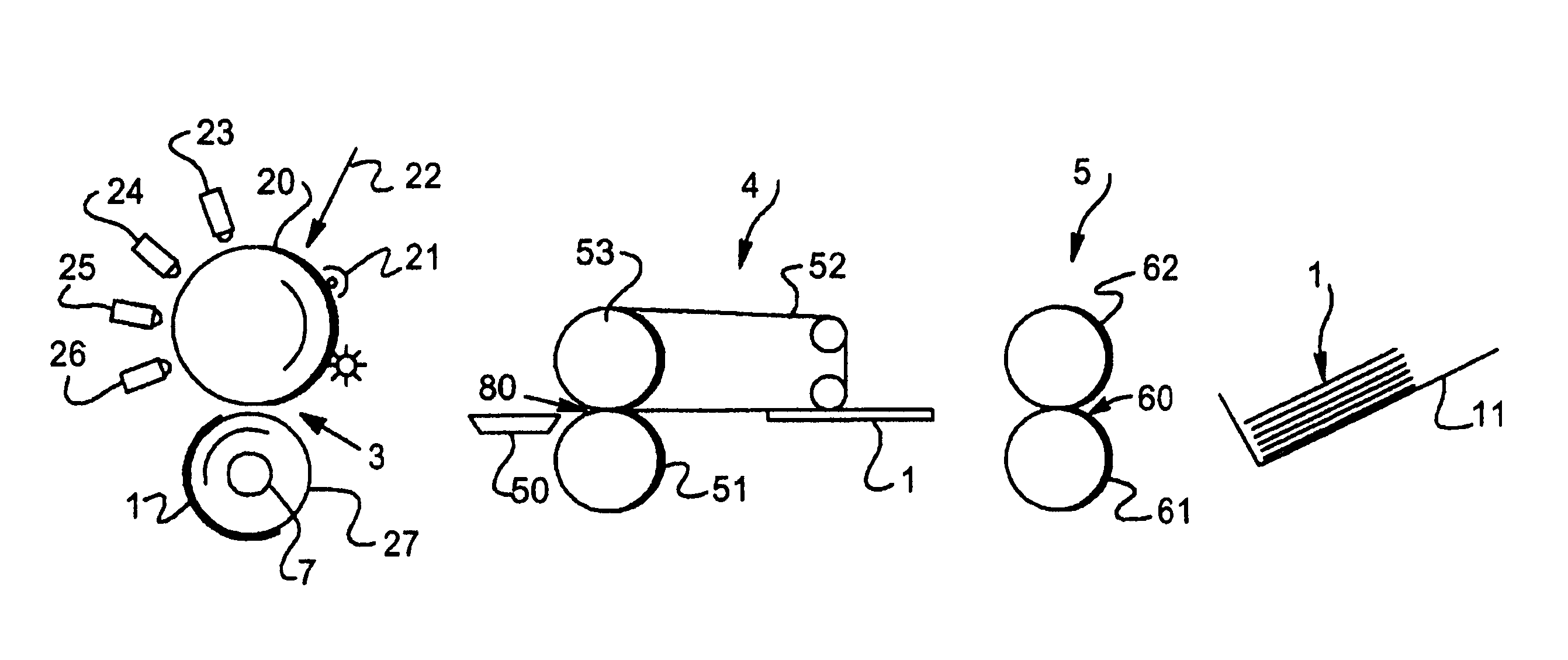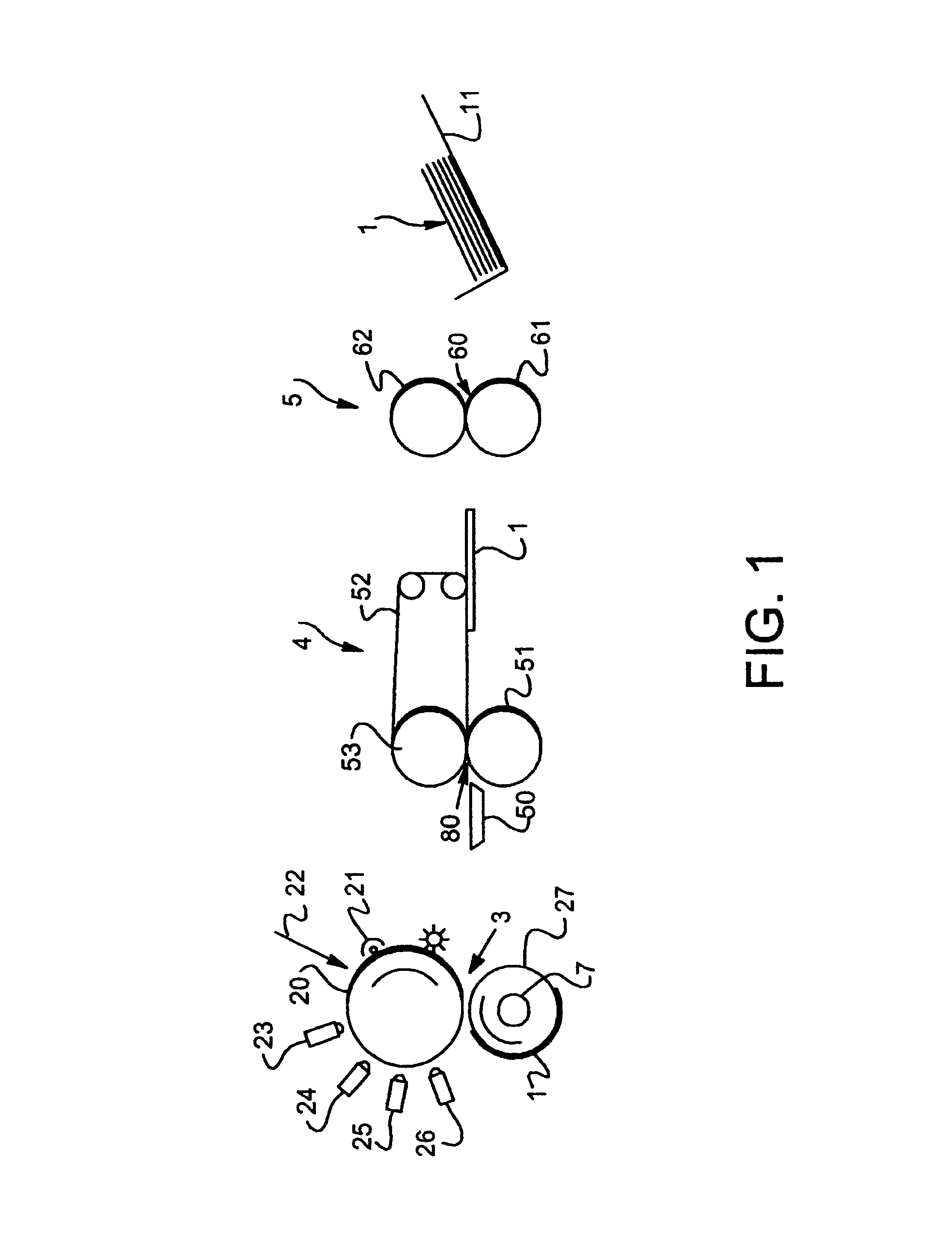Fuser apparatus for adjusting gloss of a fused toner image and method for fusing a toner image to a receiver
a toner image and gloss technology, applied in the field of heat softenable toners, can solve the problems of not being able to control or otherwise adjust, the overall look of the image is not as visually pleasing to the human eye, and the molecular weight is too large or too small
- Summary
- Abstract
- Description
- Claims
- Application Information
AI Technical Summary
Problems solved by technology
Method used
Image
Examples
example 1
Preparation of a Finishing Roller
A core comprised of a cylindrical aluminum tube having a length of 15.2 inches and an outer diameter of 3.5 inches is initially cleaned with dichloromethane and dried. The outer surface of the core is then primed with a uniform coat of a silicone primer, i.e., GE 4044 silicone primer available from GE Silicones of Waterford, N.Y. The core is then air-dried.
A silicone base cushion layer is then applied to the so-treated core. Initially, a silicone mixture is first prepared by mixing in a three roll mill 100 parts of EC-4952 (a hydroxy-terminated poly(dimethylsiloxane) base compound) obtainable from Emerson Cuming Silicones Division of W.R.Grace and Co. of Lexington, Mass. The EC-4952 base compound is believed to contain a hydroxy-terminated poly(dimethylsiloxane) polymer with about 33% by weight, based on the weight of the EC-4952 base compound, of aluminum oxide and iron oxide therein as thermally conductive fillers. The EC 4952 base compound include...
examples 2-6
Use of Finishing Roller at Various Contact Temperatures
In Examples 2-6, a pair of finishing rollers prepared substantially according to Example 1 are used in a post-fusing finishing system to adjust gloss of a receiver sheet bearing the fused process color toner patches obtained in the respective runs described in Comparative Examples A-E. The electrostatographic machine employed is substantially as described in Comparative Examples A-E above, except that a post-fusing finishing system substantially as described in FIG. 1 is used.
The post-fusing finishing system employed for Examples 2-6 uses two of the finishing rollers prepared substantially as described in Example 1 and oriented in the configuration as described for finishing rollers 61 and 62 of FIG. 1. The finishing rollers are pressed together to form a heated contact nip. The heat is provided from use of quartz lamps positioned inside of each finishing roller. In Example 2, the heat supplied to one finishing roller (upper rol...
PUM
 Login to View More
Login to View More Abstract
Description
Claims
Application Information
 Login to View More
Login to View More - R&D
- Intellectual Property
- Life Sciences
- Materials
- Tech Scout
- Unparalleled Data Quality
- Higher Quality Content
- 60% Fewer Hallucinations
Browse by: Latest US Patents, China's latest patents, Technical Efficacy Thesaurus, Application Domain, Technology Topic, Popular Technical Reports.
© 2025 PatSnap. All rights reserved.Legal|Privacy policy|Modern Slavery Act Transparency Statement|Sitemap|About US| Contact US: help@patsnap.com



